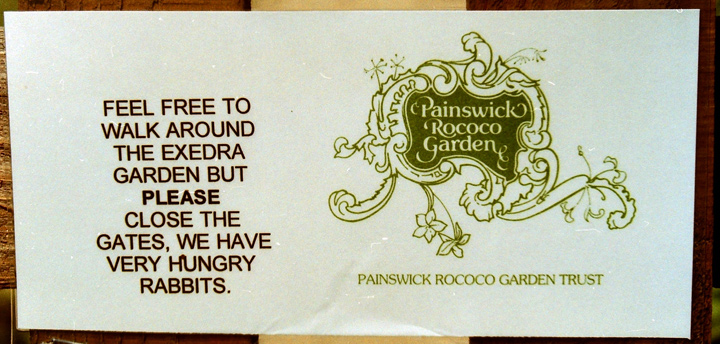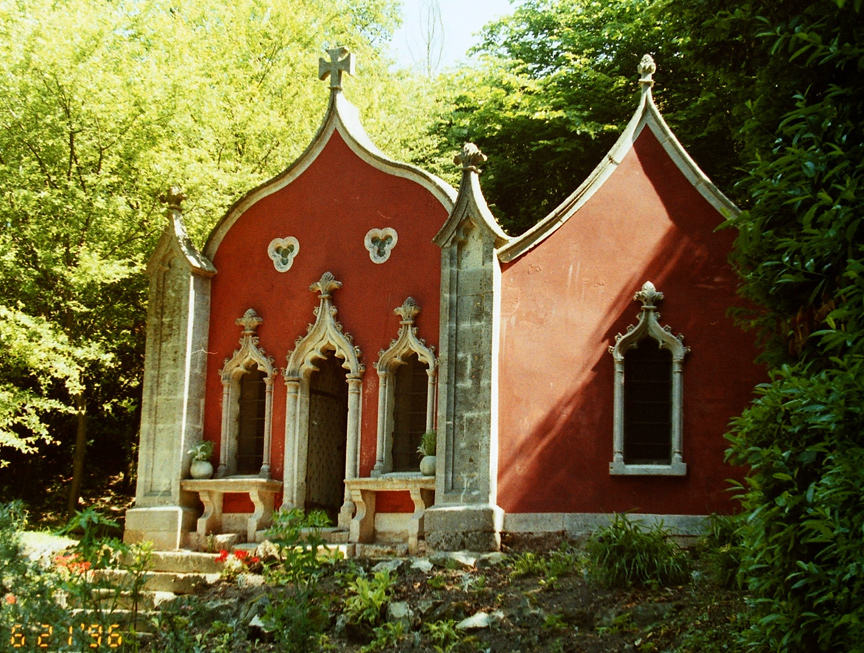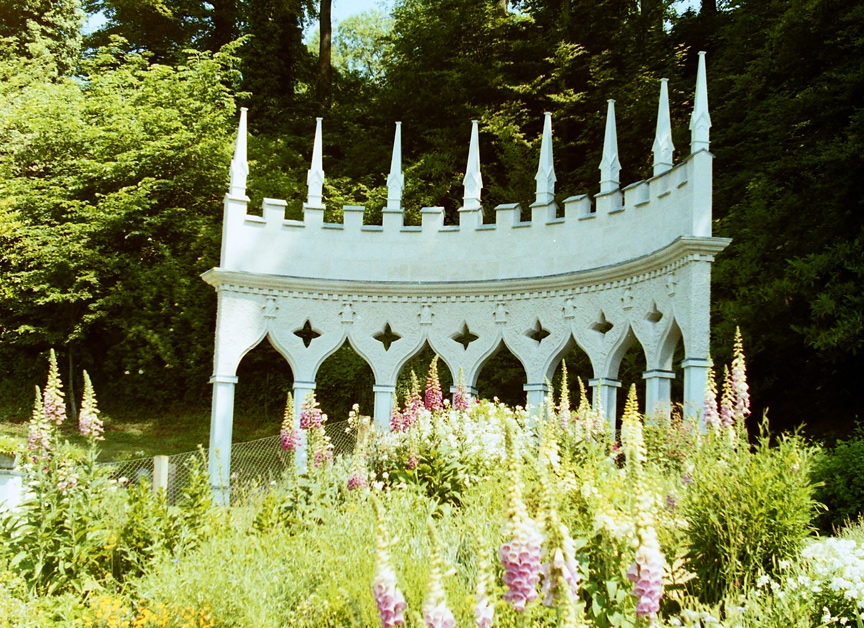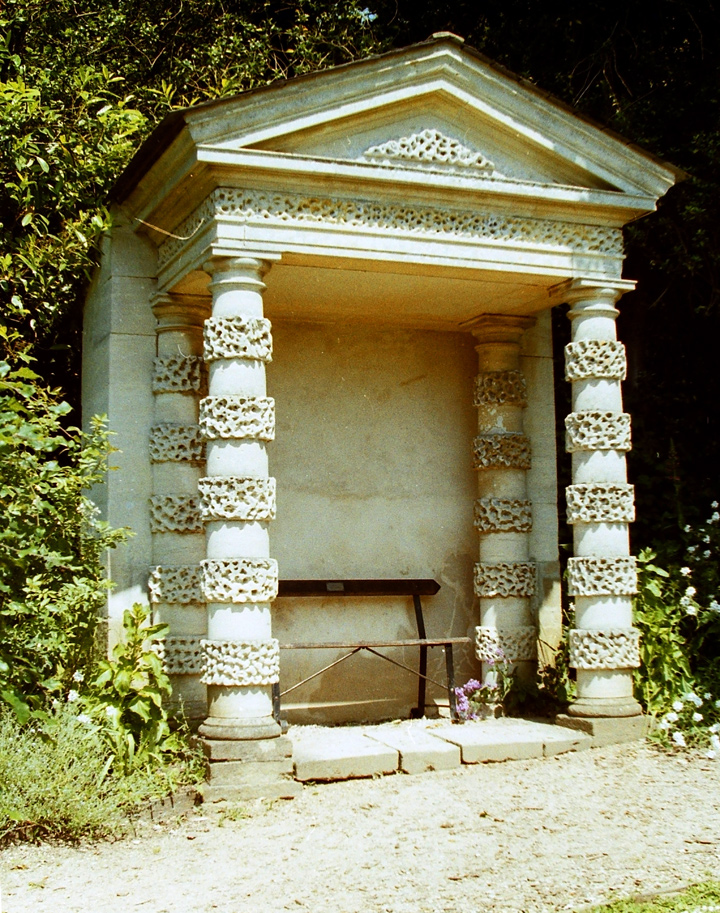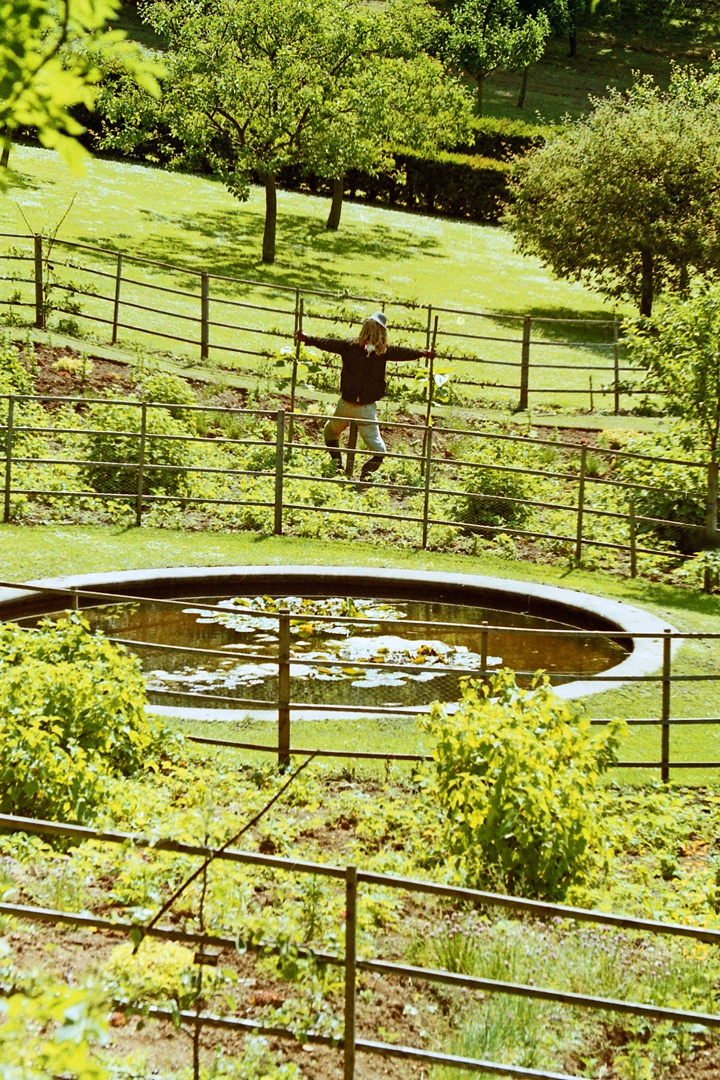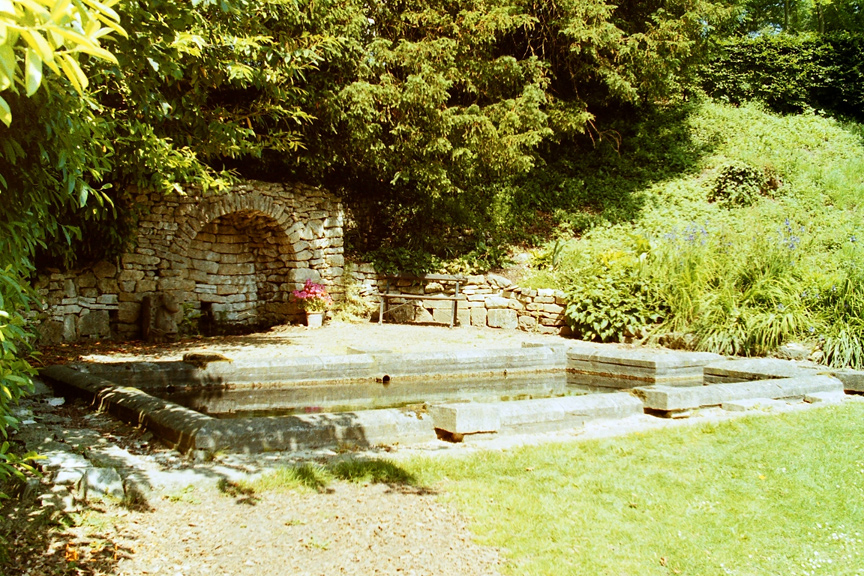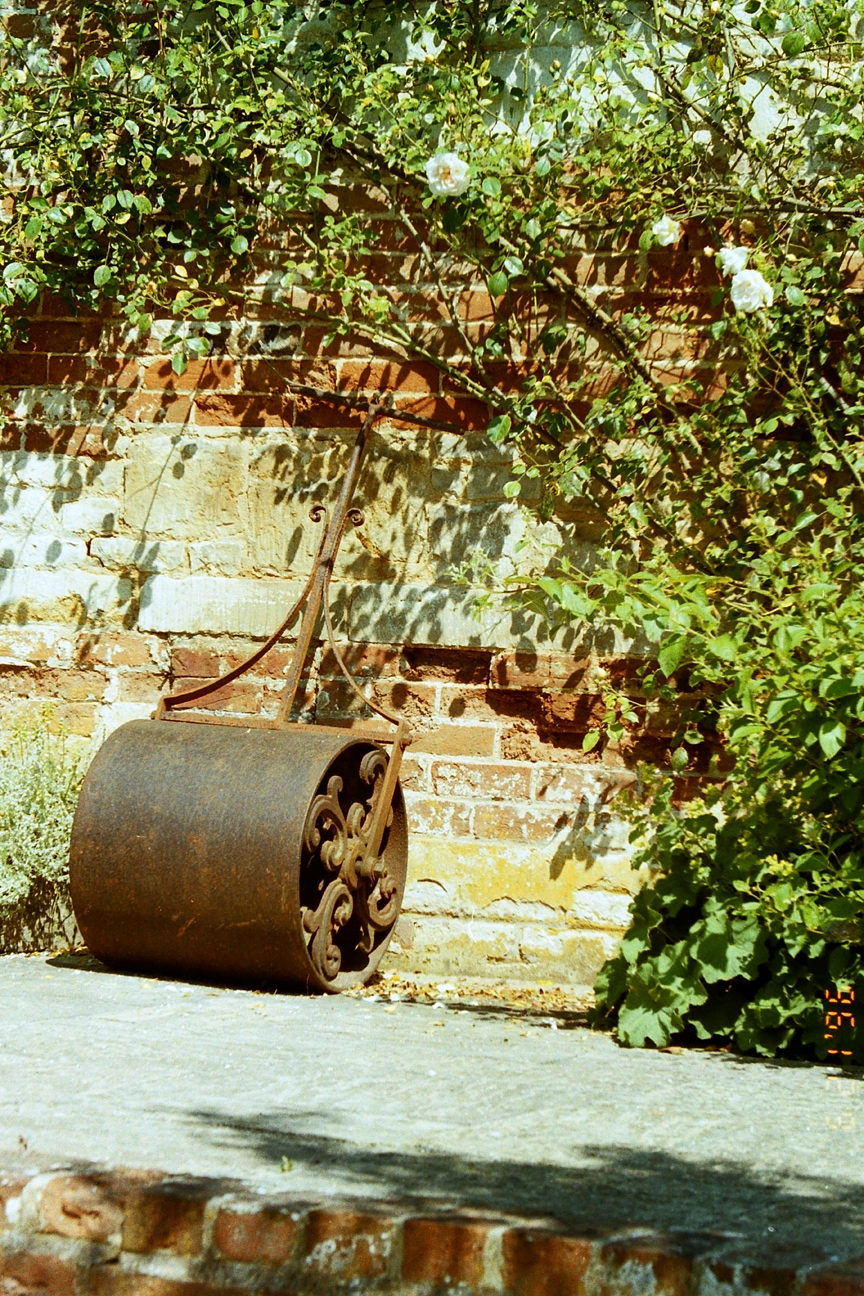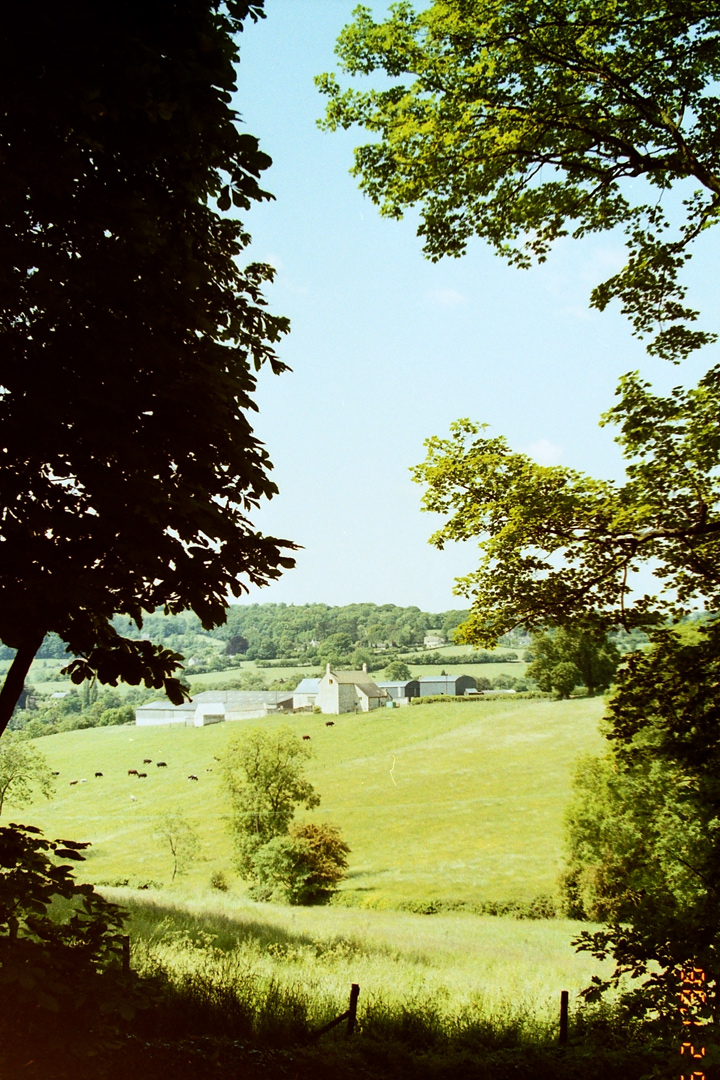

Sezincote
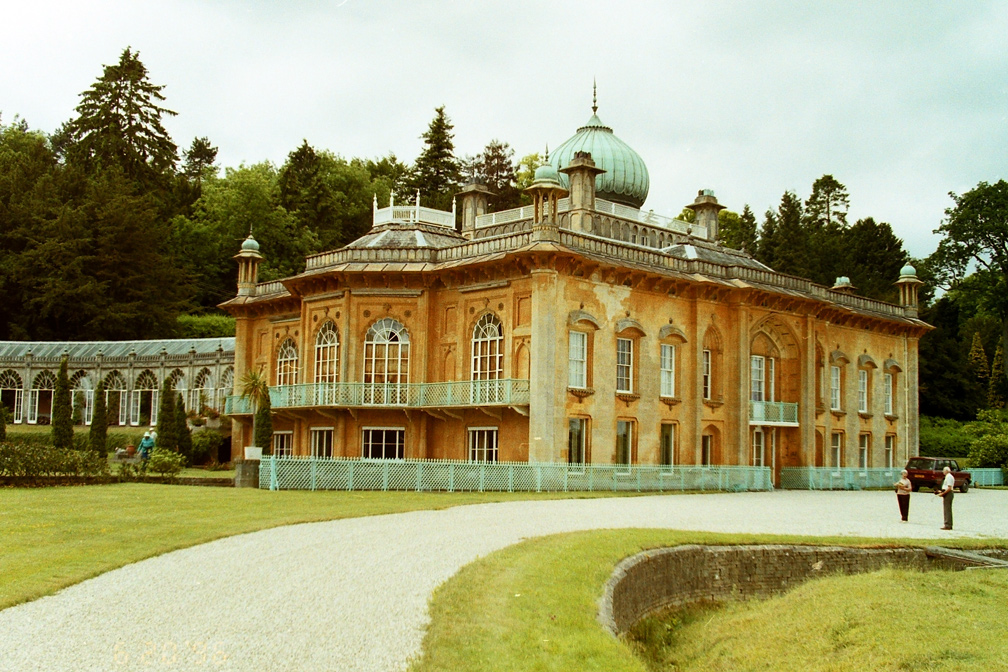
Sezincote is country estate in Gloucestershire, England. The house was designed by Samuel Pepys Cockerell, built in 1805, and is a notable example of Neo-Mughal architecture, a 19th-century reinterpretation of 16th and 17th-century Mughal architecture from the Mughal Empire.
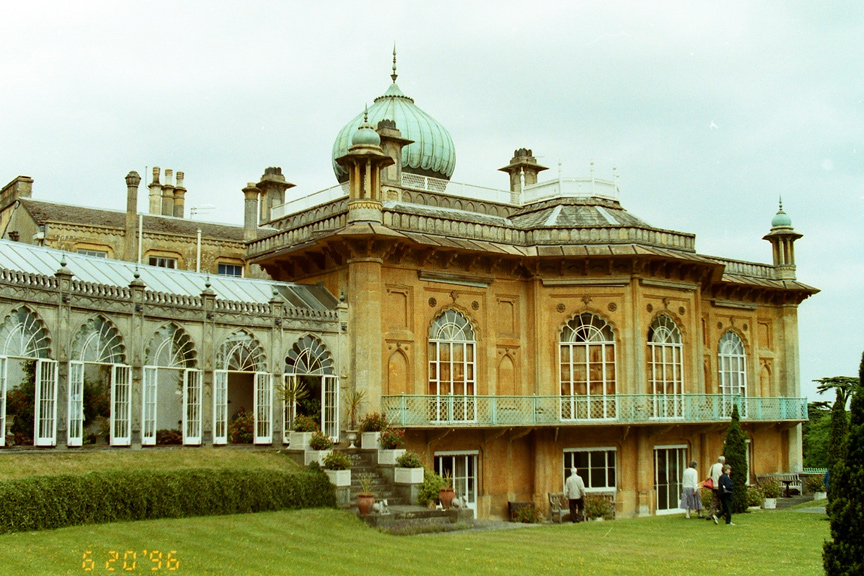
Sezincote is dominated by its red sandstone colour, typical in Mughal
architecture, but features a copper-covered dome instead of the typical white
marble. The fenestration is composed of a sequence of extra-large windows with
an arch-shape at the top. The arch, however, is not a simple or typical design,
but instead a shell-like fan that is evidence of the Mughal influence.
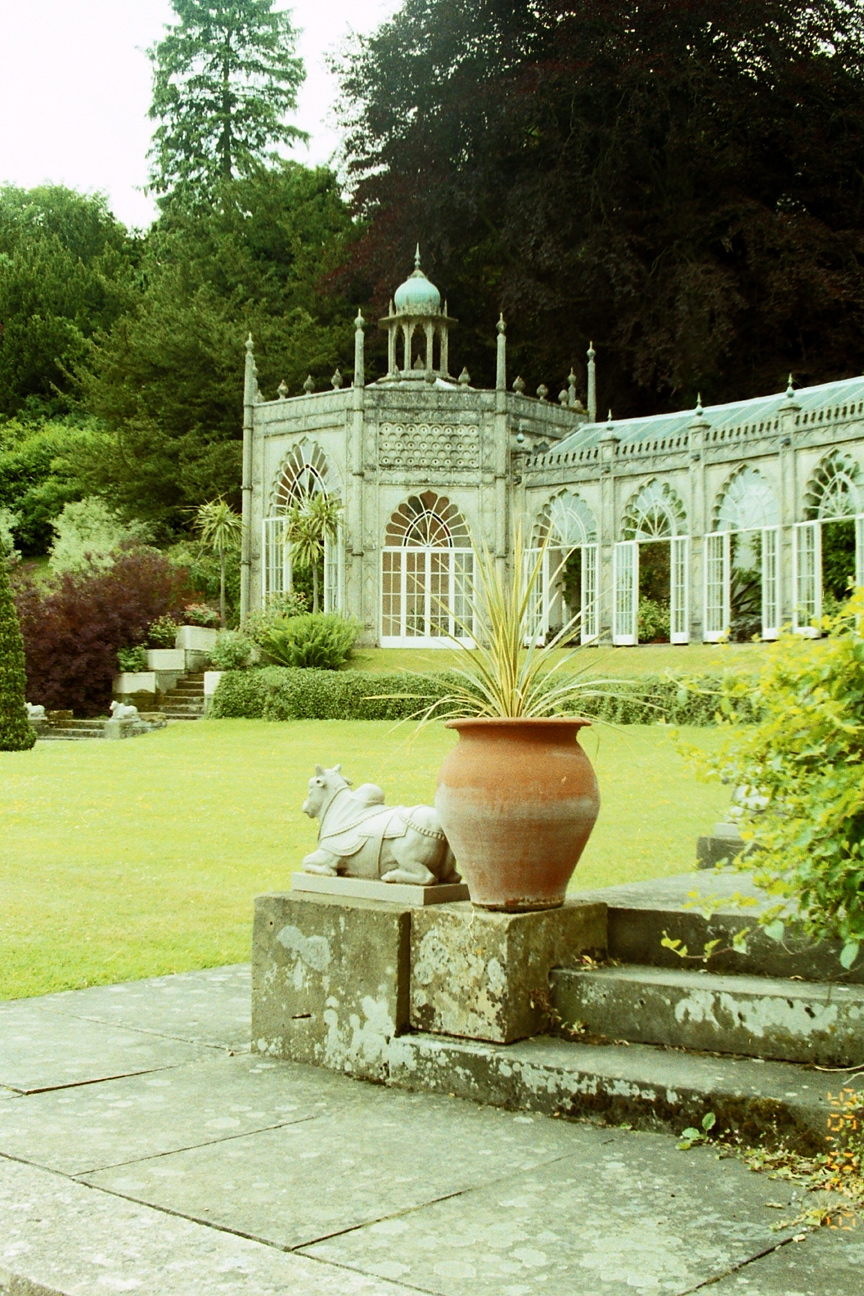
The landscape was designed by Humphry Repton. It is essentially a
renaissance-style garden with elements of Hindu style, as seen in the crescent
bridge with columns.
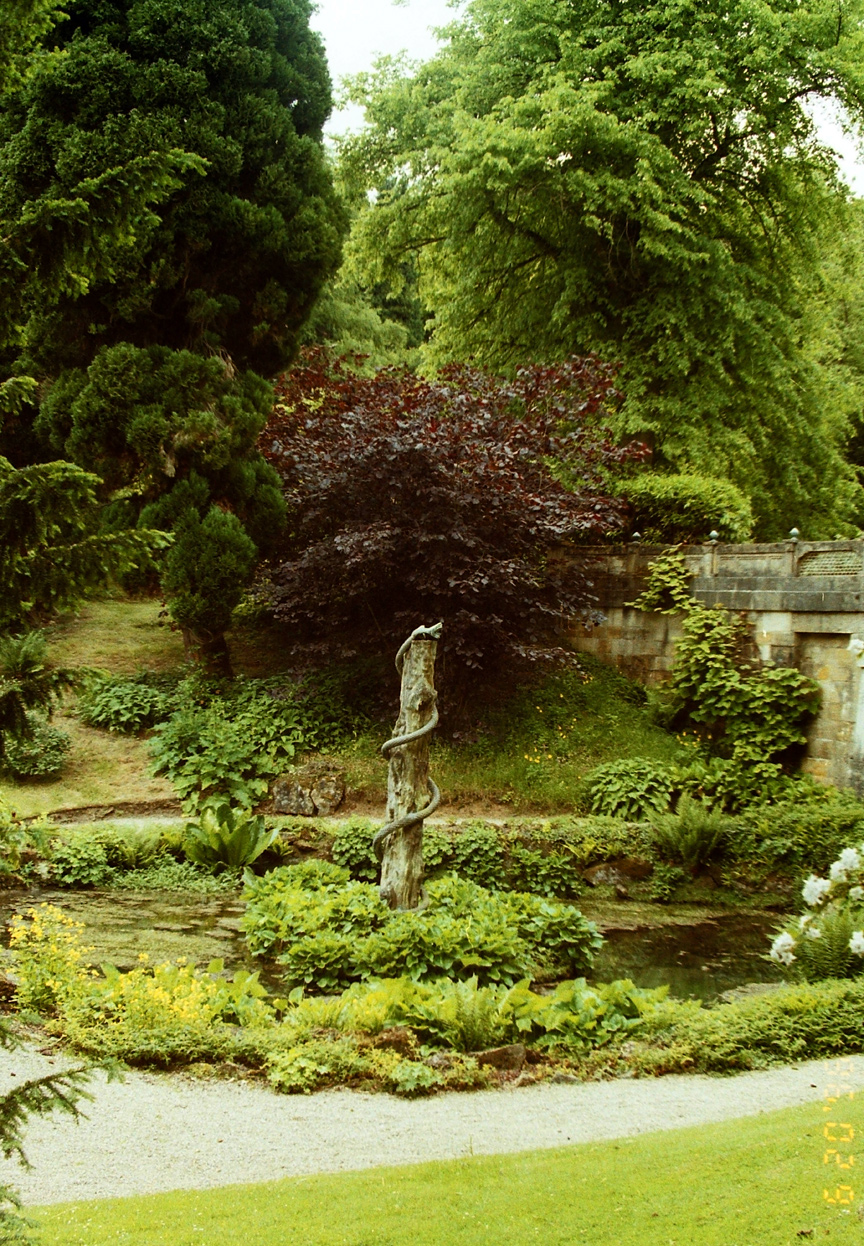
The house is in countryside 1 1⁄2 miles (2.4 km) from Moreton-in-Marsh, "set on
high ground in the shelter of the Cotswolds." Colonel John Cockerell bough the
estate in 1795 on his return from Bengal. After his death in 1798, his youngest
brother, Charles Cockerell, inherited the property who then "employed another
brother, Samuel Pepys Cockerell, to build him a house in the Indian manner."
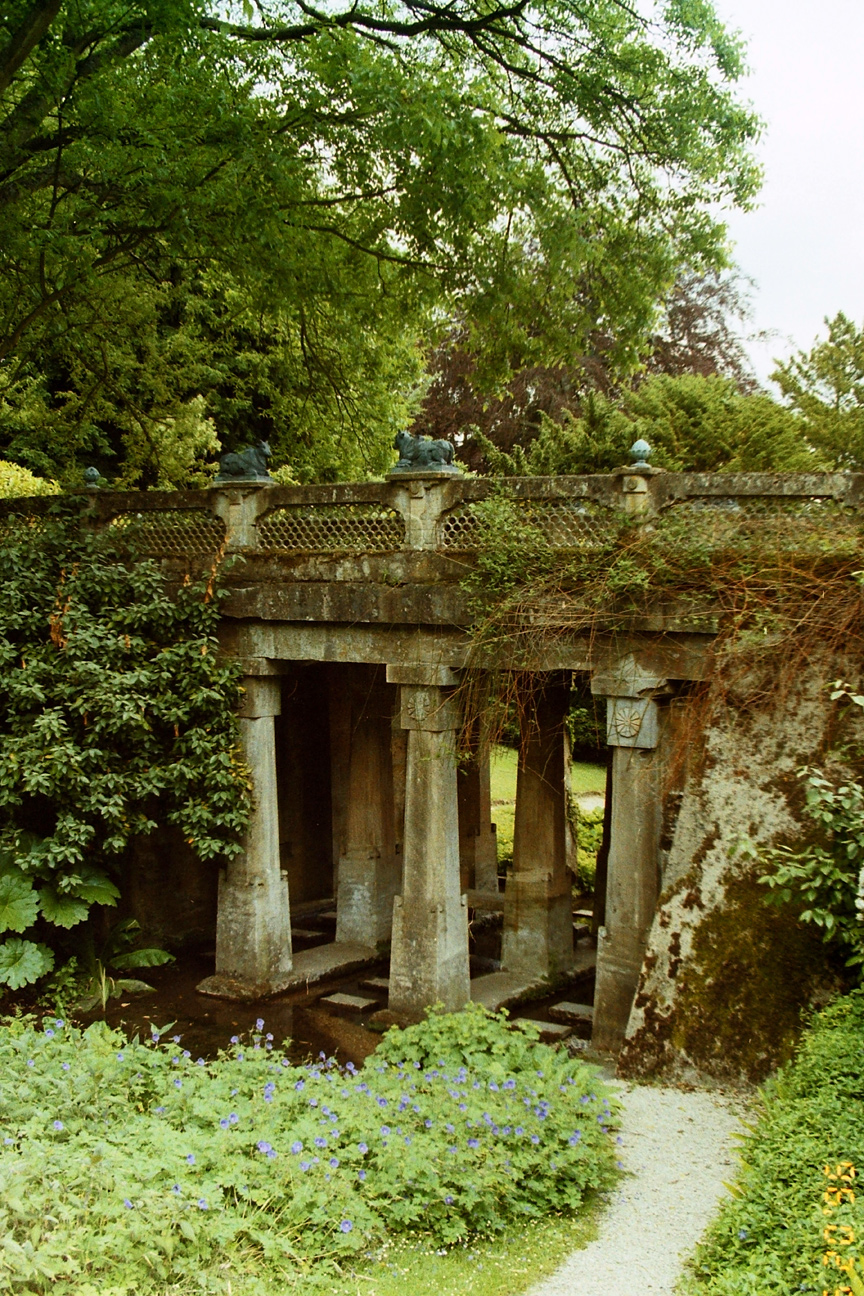
Samuel Pepys Cockerell worked as surveyor for the British East India Company and
as an apprentice to Sir Robert Taylor, where John Nash was also apprenticed. In
spite of his tenure as Surveyor to the East India Company, Cockerell never
travelled to India; his encounters with Mughal architecture, a building style
that flourished in India in the 16th century, were strictly through the medium
of drawings and engravings, such as those by Thomas Daniell (who designed the
garden for his "old Indian ally" Sir Charles Cockerell and its temple, bridge,
dairy and farm buildings) and his nephews. Cockerell had already experimented
cautiously with Indian elements at Daylesford, Gloucestershire, built for Warren
Hastings, first governor-general of British India, nearby. Here the style is
characterized by a striking revival of Islamic architecture in Northern India,
where Persian, Indian, and various provincial styles were fused to produce works
of great refinement. Favoured materials included white marble and red sandstone.
A notable example is The Taj Mahal, completed in 1648 by the Emperor Shah Jahan.
Text from Wikipedia

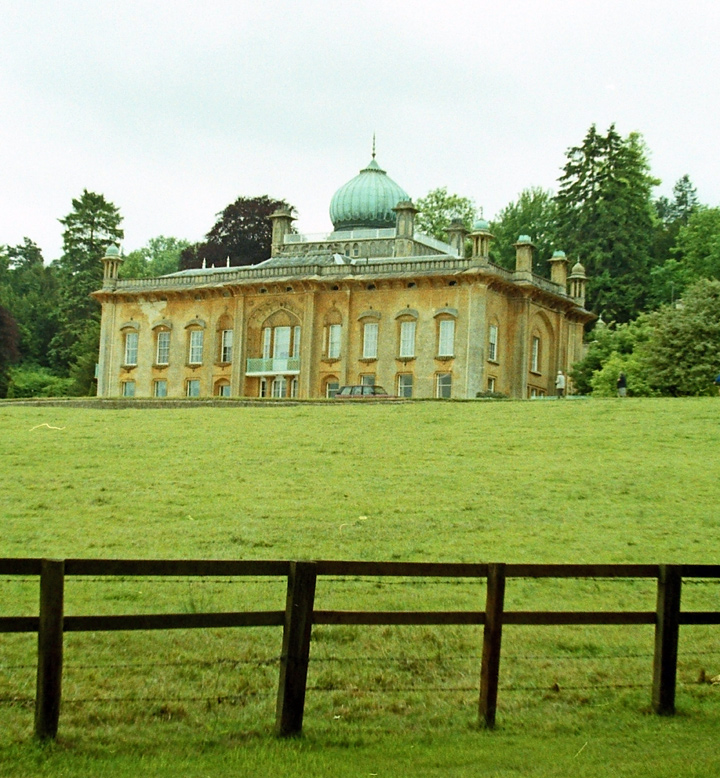
Painswick is a town and civil parish in Gloucestershire, England. Originally the town grew on the wool trade, but it is now best known for its parish church's yew trees and the local Rococo Garden
Rococo Garden
